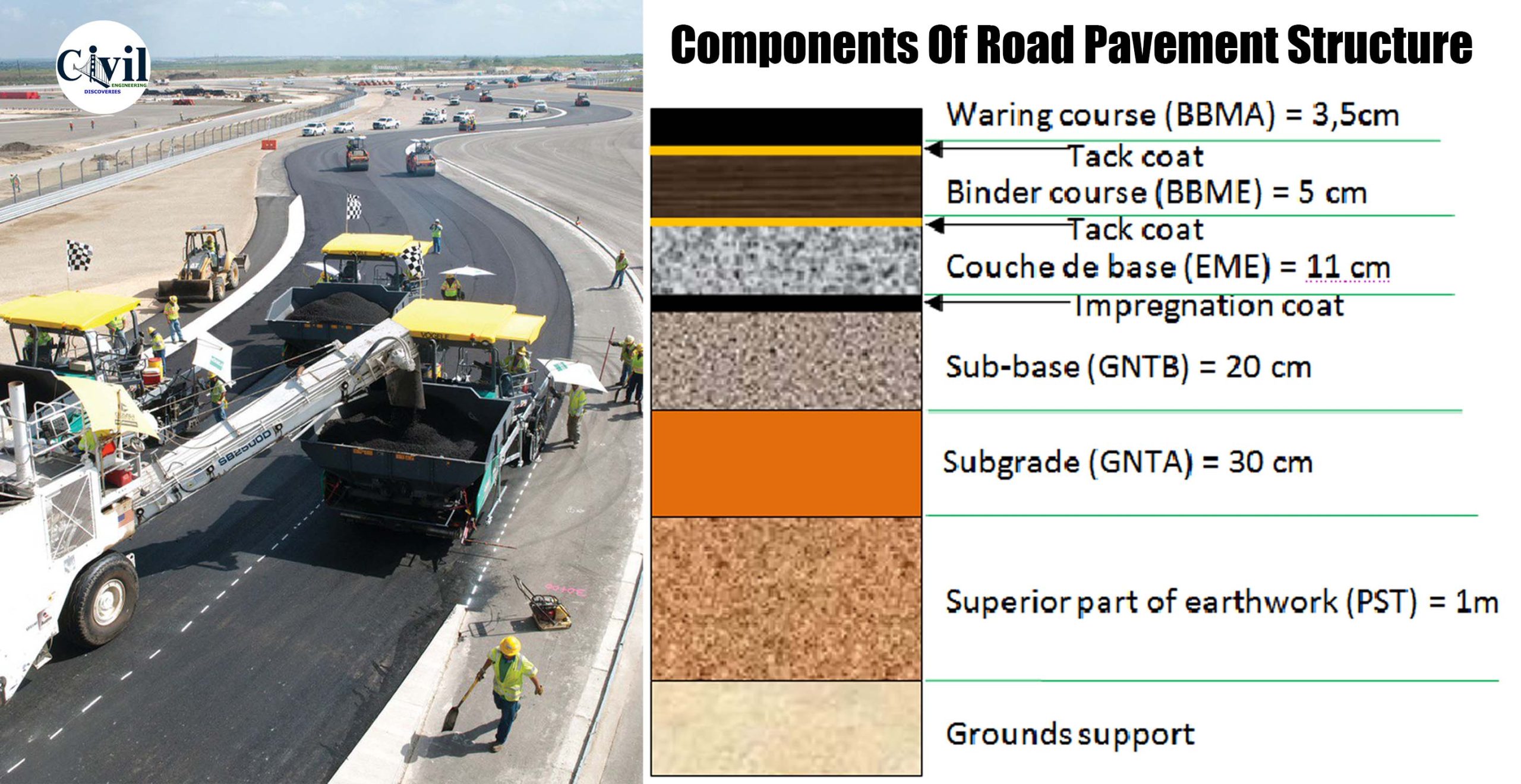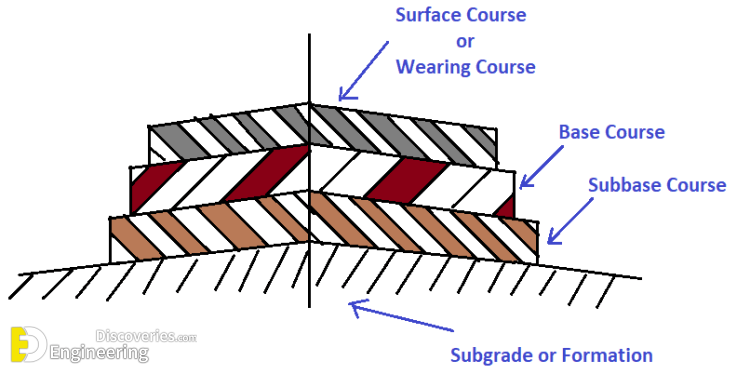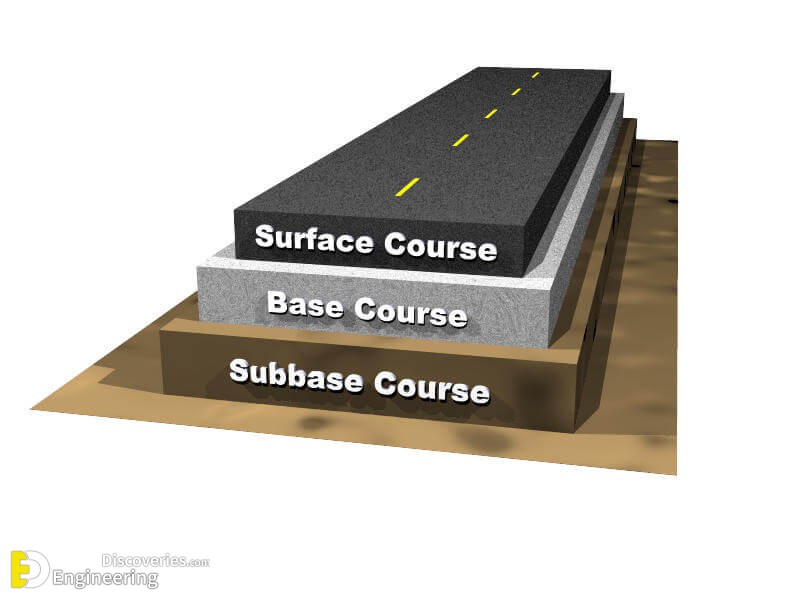Following are the different components of the road structure
1- Subgrade
2- Sub-base
3- Base course
4- Surface course or wearing course
All these components belong to a typical flexible pavement, whereas rigid pavement usually consists of subgrade, subbase and a concrete slab.
1- Subgrade
The finished and compacted surface of earthwork on which a road pavement rests is called subgrade or formation. The subgrade of a road may be provided on an embankment, in cutting or existing ground level depending upon the topography and the finalized formation level. It consists of well compacted natural soil brought to the required camber and gradient. The thickness and type of pavement structure depend upon the supporting power of the subgrade because the entire load of the pavement, including the load of traffic transmitted through the pavement, is ultimately taken up by the subgrade.
2- Sub-base
A layer of granular material provided in between the subgrade and the base course in a road pavement is known as sub-base. It is provided as an additional layer when subgrade is of poor quality. It consists of a layer comparatively cheaper material like burnt clinker, natural gravel or slag.
3- Base Course
A layer of boulders or bricks provided over the subbase or immediately over the subgrade in the absence of sub-base in a road pavement is called base course or soling or foundation course. This course is considered as the most important and major component of road structure because this course is to bear the impact of traffic transferred through the wearing course. It consists of a stable material like boulders, gravel, one or two layers of well-burnt bricks etc. In the case of rocky subgrade, this course is not provided.
4- Surface Course Or Wearing Course
The topmost layer of the road pavement directly exposed to traffic is called wearing course or surfacing. It may consist of one or more number of layers in case of flexible pavements. A good wearing course should be impervious and weather resisting. it should be able to resist abrasive action of the traffic.
Click Here To See Types Of Road Camber, Advantages, Disadvantages And Methods Of Providing Camber






